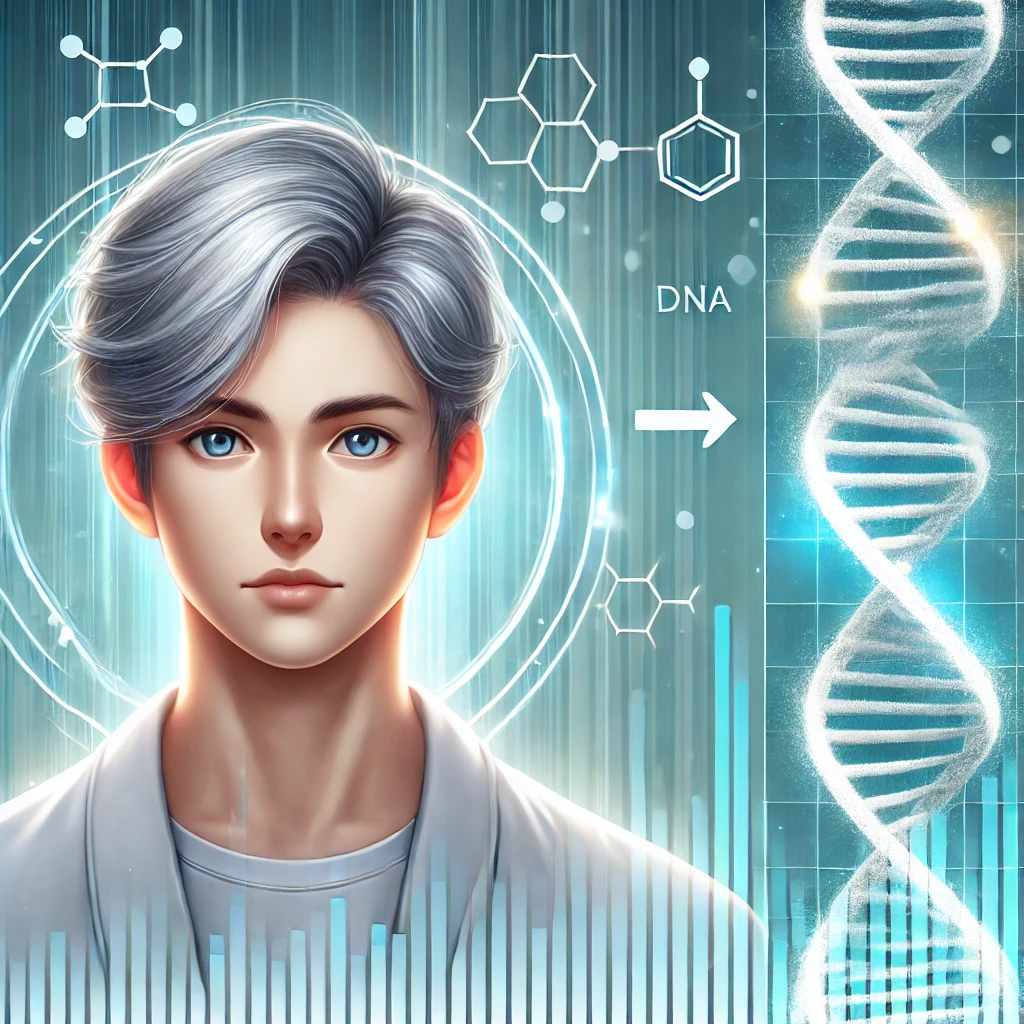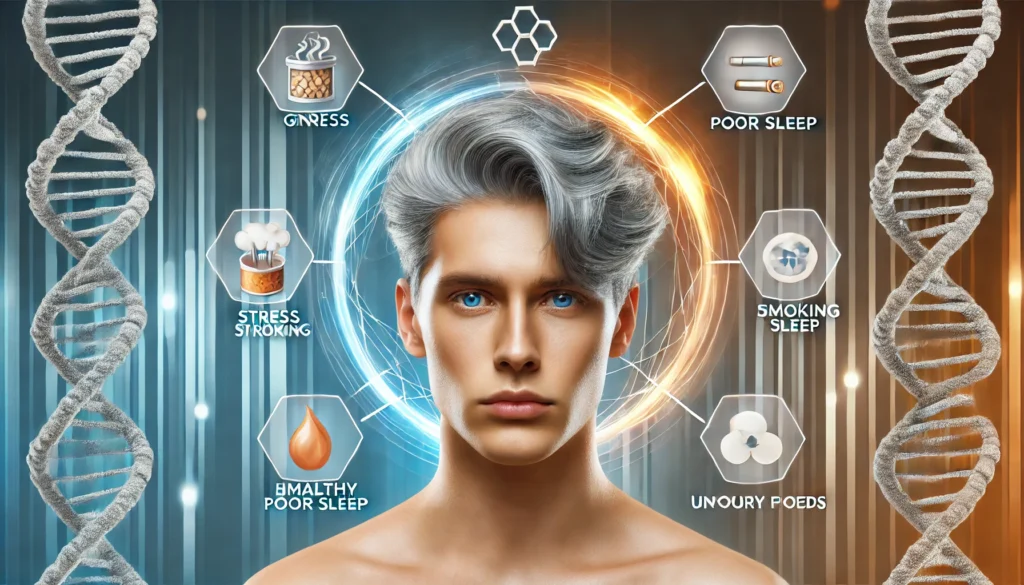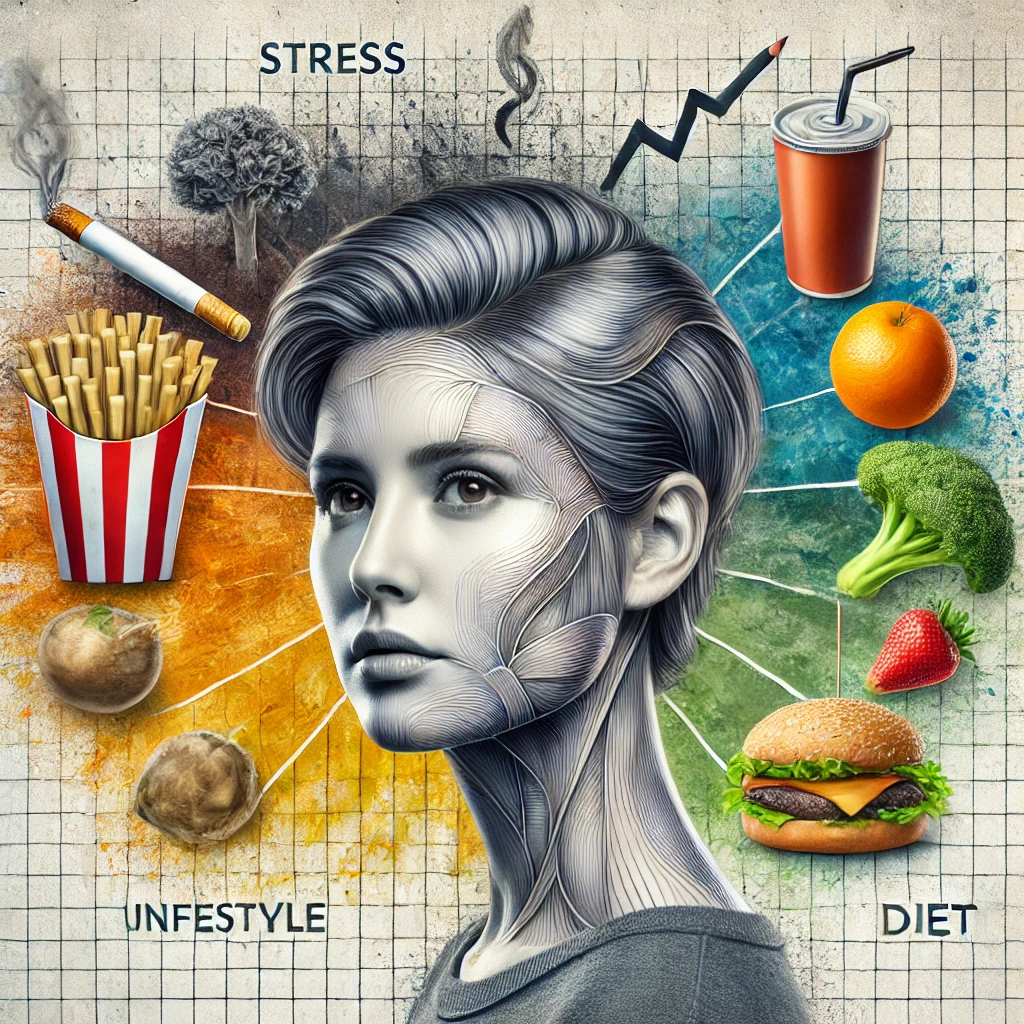Genetics, Lifestyle, and Diet: Exploring the Causes of Premature Graying

Graying hair is a natural part of aging, but it can raise questions about the underlying causes when it happens early. While many believe stress plays a major role, genetics is often the primary factor in premature graying. Parents with early gray hair might pass this trait to their children, making them more likely to experience it.
Lifestyle and diet can also impact hair color. Smoking and an unbalanced diet contribute to graying by increasing oxidative stress, while certain medical conditions can accelerate this process. Some people turn to alternatives like shampoo to restore natural hair color to deal with these changes, offering a practical solution to this concern.
For those worried about gray strands, making healthier life choices can play a part. Eating a diet rich in antioxidants and avoiding smoking might slow down the graying process. Understanding the different factors causing early graying can help individuals handle it with more confidence.
The Role of Genetics in Premature Graying

Genetics plays a significant role in the onset of premature graying. While other factors like diet and stress can contribute, the inherited gene patterns greatly determine when someone may experience gray hair.
Defining Premature Graying
Premature graying occurs when hair loses its natural color at an earlier age than usual. For some, this can happen in their teens or early twenties, much sooner than the average age of graying. The primary factor driving this early pigment loss is genetics, which sets the timeline for when hair begins to lose its color.
Early graying isn’t a sign of any serious health problem. It’s often considered a normal part of aging, simply happening sooner due to family history.
Genetic Factors and Heritability

Genetic factors are among the strongest predictors of when someone’s hair turns gray. A person inherits certain genes responsible for melanin production, which, when altered, can lead to early graying.
Heritability studies show that if parents experience gray hair early, their children are likely to follow a similar pattern. Multiple genes are involved, but specific variants in genes like IRF4 and BOD1L have been identified to affect hair pigmentation timing.
The Genetics of Hair Pigmentation
Hair color is primarily determined by melanin, a pigment produced by melanocytes within hair follicles. These cells decline in function as a person ages, gradually leading to gray hair. Genetic makeup decides how quickly and to what extent these melanocytes diminish.
Mutations or changes in certain genes can speed up the process. For example, genes like IRF4 and BOD1L influence pigmentation. These inherited traits mean that individuals with a family history of early graying are predisposed to experiencing it themselves. This genetic understanding highlights why some people may notice gray hair in their twenties while others don’t see it until much later.
Lifestyle and Dietary Influences

Lifestyle choices and diet play a significant role in premature graying. Factors such as oxidative stress, vitamin deficiencies, and habits like smoking can affect hair health and color.
Oxidative Stress and Graying
Oxidative stress occurs when there is an imbalance between free radicals and antioxidants in the body. This can damage cells, including those responsible for hair pigmentation. The buildup of oxidative stress can speed up the graying process. It is linked to higher levels of hydrogen peroxide in hair follicles, which can bleach the hair pigment. Consuming antioxidant-rich foods, such as berries, nuts, and leafy greens, can help manage oxidative stress. Regular exercise and reducing stress may also contribute to better cell health, potentially slowing graying.
Vitamin Deficiencies and Hair Health
Certain vitamins are key for maintaining hair color and health. Deficiencies in vitamins such as B12, D, or E may contribute to premature graying. Vitamin B12 is important for red blood cell production, which supplies oxygen to hair follicles. Low levels can lead to hair color changes. Vitamin D helps in creating new hair follicles, and Vitamin E protects against oxidative stress. Including foods like eggs, fish, and dairy products in the diet can help maintain healthy levels of these vitamins.
Impact of Smoking and Pollution

Smoking negatively affects hair health and can lead to premature graying. The toxins in cigarettes can damage melanin-producing cells in hair follicles. This damages hair color and may result in earlier graying. Exposure to pollution can also contribute to increasing oxidative stress, which harms the scalp and hair roots. People concerned about gray hair might reduce smoking and try to limit pollution exposure by staying indoors on high-pollution days and using air purifiers when possible.
Conclusion
Genetics plays a significant role in premature graying. While genetic predisposition is not something that can be changed, understanding how it interacts with other factors is important.
Lifestyle choices also affect hair color changes. Smoking and alcohol are linked to increased oxidative stress, which impacts hair health.
Diet is another influencing factor. A lack of certain nutrients can speed up graying. Nutritional deficiencies might contribute to hair color changes over time.
Laid out clearly, genetics, lifestyle, and diet together form the main factors linked to premature graying. Each provides different influences, and understanding them can help manage or anticipate hair color changes.






